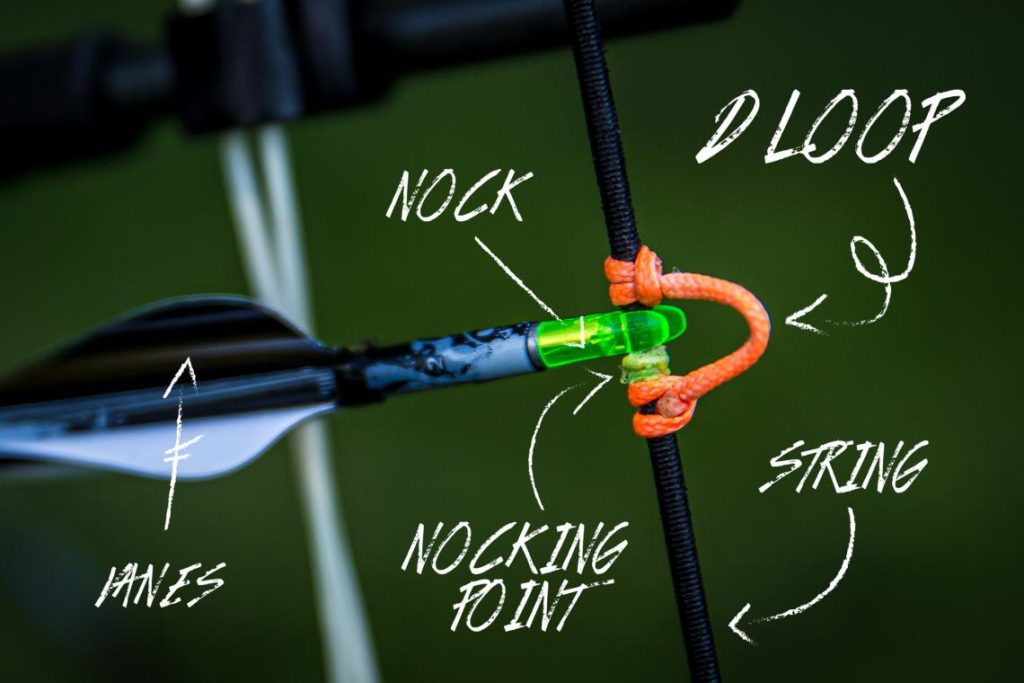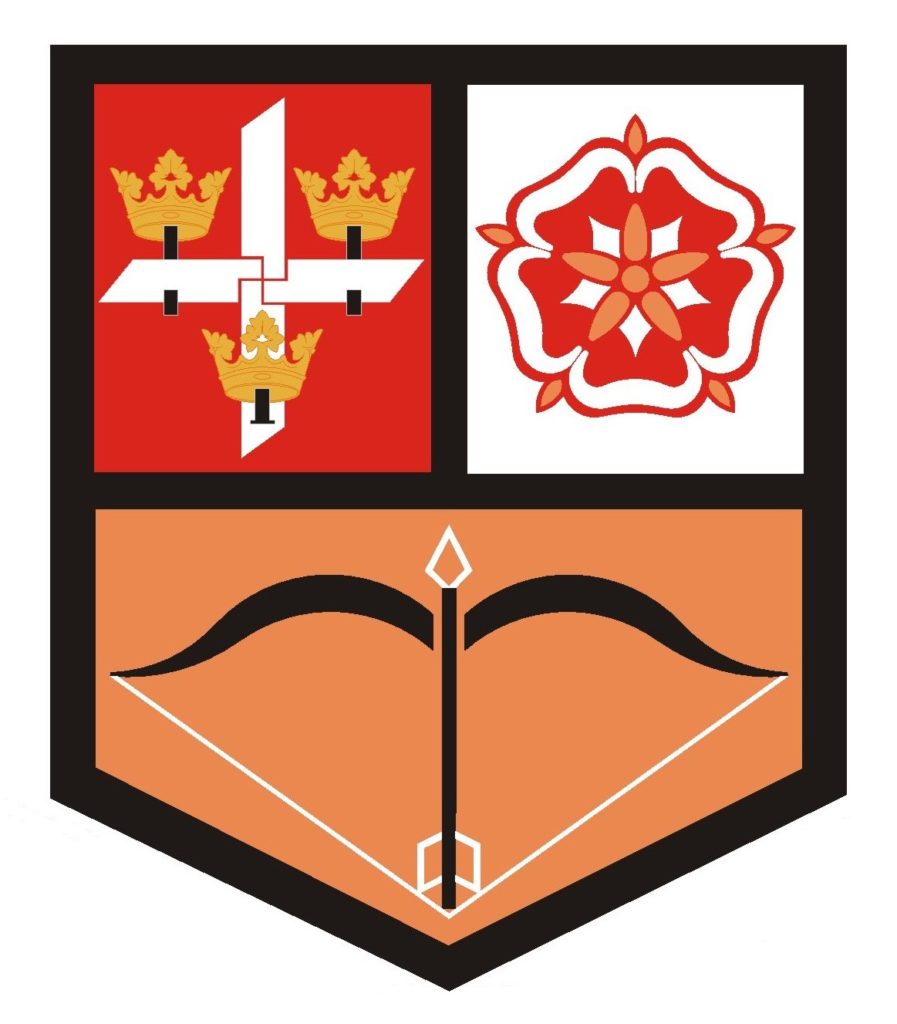
Holless W. Allen was granted a patent by the US Patent Office in December 1969, for “an archery bow with draw force multiplying attachments” – and so the ‘Compound bow‘ came into being.

However, it wasn’t until Tom Jennings got involved in 1972, that Compound bows got into mass production (by 1975, Jennings was selling 60,000 compound bows p.a.).
Modern compound bows have evolved far from those early designs …

An archer shooting a compound bow pulls the string back to a mechanical stop using a release aid (see below), with the strength required to draw the bow decreasing as the arrow nears full draw. The archer aims at the target through a magnified scope and activates their release aid to detach it from the string and shoot the arrow. The energy stored in the bent limbs and taught cables transfers into the arrow, sending it downrange to the target. Drawing a competitive compound bow can require up to 28 kilograms (60 lbs) of force, although at full draw the holding weight can be as little as 6 Kg (13 lbs), and an arrow shot from a compound bow can travel at speeds of over 350 kph (220 mph).
Due to the design of Compound bows, the force applied to an arrow when it’s released, increases after the arrow is released from full draw (unlike a recurve bow, where the arrow has the maximum force applied at full draw & release and the force behind the arrow decreases as it moves forward before leaving the string). The ‘accelerating’ nature of the compound shot reduces ‘flexing’ in the arrow shaft and allows the arrow to leave the bow at a much higher speed than is typical for a recurve bow.
Modern compound bows are built using technologically advanced materials, including carbon-fibre, aluminium & magnesium. The equipment is rigorously tested, as compound bows remain under significant tension, even when not in use, and must withstand remarkable forces when shot.

Cams
Cams are a critical component of a compound bow. They allow compound bows to transfer so much energy into their limbs. However, when you reach the full draw of the bow, cams can ‘let off’ up to 90% of the weight required to hold the bowstring in the full draw position.
A cam is different from a wheel; it is not perfectly round. These oblong shapes are designed to give every bow a unique balance of power, speed, and accuracy. Compound bows can use; Single cam, Hybrid cam, Binary cam or Twin cam systems.
Limbs
Compound bow limbs are quite different from recurve limbs. Compound bows use a parallel limb design as opposed to the traditional ‘D’ shape of a bow. These parallel limbs are shorter and can come in solid or split designs. These limbs allow the bow to flex as it is drawn and released. The parallel design helps provide a quieter shot and better distribution of vibration. Unlike recurve limbs that tend to release ‘forward’, compound bow limbs release vertically (up/down) keeping the bow balanced through the shot. The limb fits into a special pocket on the riser and is secured in place with a bolt.


Strings / Cables
Buss Cables – These cables are separate from the bowstring; they attach to the cam axles and increase stabilization and synchronization between the cams.
Control Cables – Control cables feed power through the string. This cable is the primary control of a bow’s draw weight. The control cables are attached to the bowstring. The cable is fed through the cams as the archer draws back the string. Unlike a recurve bow, a Compound bow is left strung after it is tuned and requires a special ‘press’ to remove and/or replace the string and cable set.
Rests
Rests attach just above the grip. An arrow rest helps keep an arrow level and in place. There are a variety of rests. Each kind of rest offers different features. The most popular rests today are:
Whisker Biscuits – a ring with bristles facing inward. The bristles allow the fletching to pass through unharmed but keep the arrow level until it is released.
Drop away – these rests link to the control cable by a cord. When the string is released, the rest drops leaving the arrow free to travel without sliding across any part of the body of the bow.
Launcher – provides minimal contact with the arrow, but remains in place until the arrow has left the bow.


Sights (pin-sight)
To improve the accuracy of a compound bow, there is a wide variety of sights available.
Pin-Sights come in two varieties: multi-pin or single-pin. Multi-pin sights are great for hunting and field shoots as they allow you to pre-set several pins for different distances. They allow an archer to gauge their shot based on a set of different distances to the target. A single-pin sight will be set for a fixed distance, but is very easy to adjust. They allow an archer to quickly sight in their bow no matter how distant their target is. Unlike recurve bows, Compound bow sights are allowed to magnify for competition – and may even include a spirit level!
Sights (peep-sight)
Peep-Sights are built into the string of a bow and make the rear sight of a sighting pair. An archer aligns and looks through the peep and down through the pin sight (similar to sighting a rifle). This type of sight pairing helps create a very accurate and consistent arrow trajectory. Archers use peep sights in conjunction with pin sights.


D-Loop
A D-Loop is fitted to the bowstring around the knocking points and is ‘gripped’ by the release aid hook to enable a clean draw and release of the arrow.
Release aid
The Release aid allows a Compound archer to firmly grip the bowstring during the initial draw, before the cams roll and reduce the holding weight of the bow at full draw. It also allows for a single-point precise release of the arrow without some of the ‘errors’ introduced by fingers and a tab spread across the string around the arrow.

Many of the features of a Compound bow have come from the need for a highly accurate [humane] and effective hunting weapon (note that it is illegal to hunt animals with bows or crossbows in the UK). However, there are many Archery competitions with events for the compound bow (not yet the Olympics however!).

At national & international events, compound archers are expected to achieve near perfection. In most cases, triple targets are used so that a single arrow is shot at each to reduce the chance of damaging arrows! Matches are often decided by just one or two points – or by a single-arrow shoot-out at the end of a tie. The slightest mistake can be the difference between victory and defeat!
